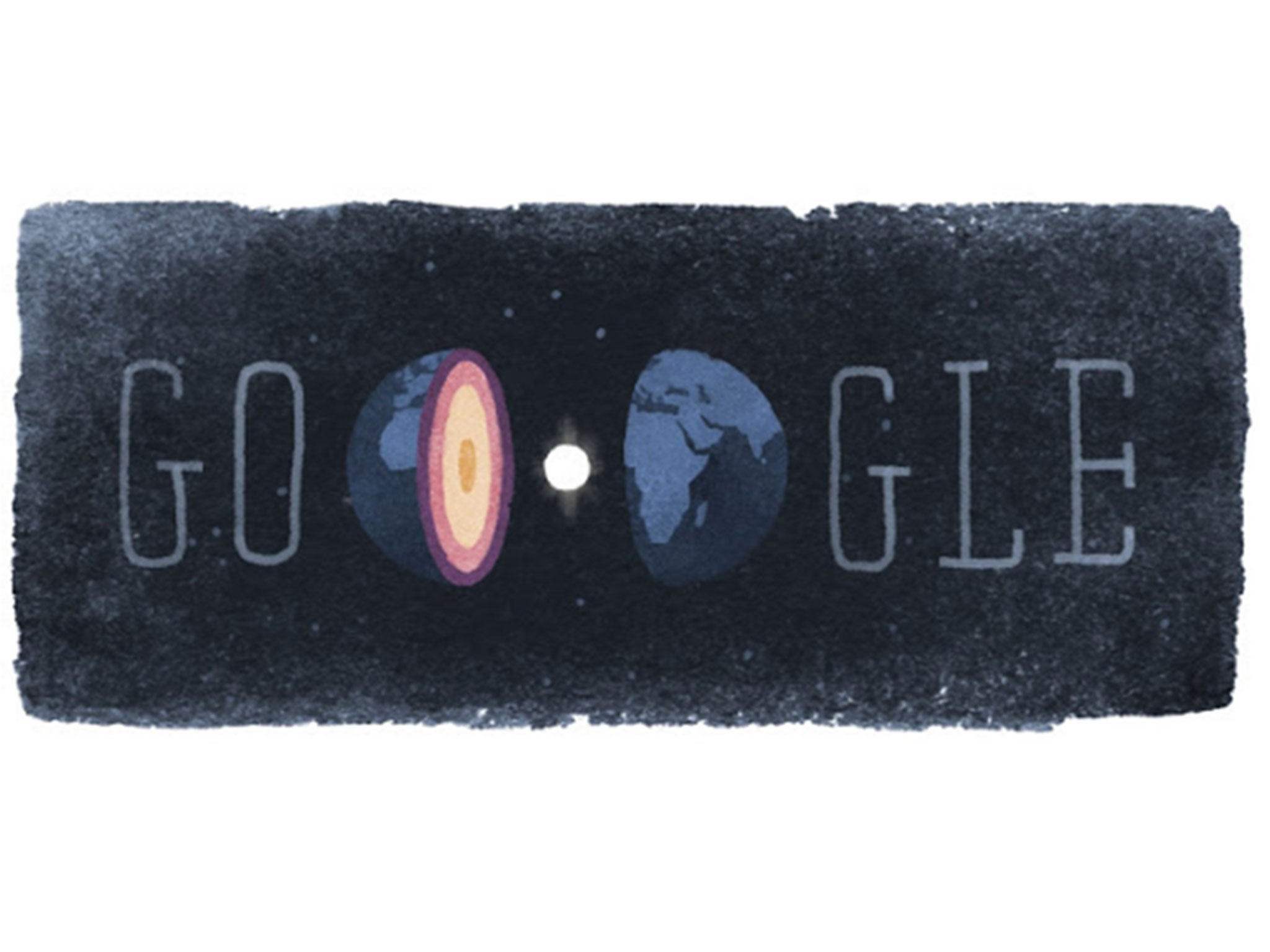Inge Lehmann: Danish seismologist's 127th birthday celebrated with Google Doodle
Her findings were the foundation for seismology today

Almost eight decades ago, Danish seismologist Inge Lehmann transformed our perception of Earth, by discovering the existence of an inner core.
To celebrate the 127th birthday of the pioneering scientist, who studied earthquakes to make her findings, Google is showing a Doodle on its front page.
The illustration shows Earth sliced into two, with its molten core shining like a star.
Here are five facts you might not know about Lehmann, who died aged 105 in 1993.
She had a unique education
Unlike the vast majority of women born in the 1880s, Lehmann was educated at a mixed gender school.
But she was shocked to realise the rest of the world wasn’t quite so equal
Frustrated by attitudes towards women in science, she told science historian Stephen G Brush in an interview in 1980: “No difference between the intellect of boys and girls was recognised, a fact that brought some disappointments later in life when I had to recognise that this was not the general attitude”
She once protested to her nephew, Niles Groes: “You should know how many incompetent men I had to compete with—in vain,” according to the American Museum of National History.
Lehmann became involved in seismology in a country with no earthquakes
After working in an actuary’s office, Lehmann became an assistant to Professor N E Norlund at the University of Copenhagen in 1925. Norlund was planning to establish two seismological stations in Denmark as well as one in Greenland. Through him, she came into contact with the leading seismologists in Europe.
Porridge helped her discover the Earth’s core
Groes once recalled watching his aunt in her garden “with a big table filled with cardboard oatmeal boxes.”
He said: “In the boxes were cardboard cards with information on earthquakes all over the world. This was before computer processing was available, but the system was the same.
"With her cardboard cards and her oatmeal boxes, Inge registered the velocity of propagation of the earthquakes to all parts of the globe. By means of this information, she deduced new theories of the inner parts of the Earth.”
She has been named “master of the black art” (which is less ominous than it sounds…)
In 1971, Lehmann was awarded the highest honour of the American Geophysical Union, the William Bowie medal in 1971. At the time, she was described as “the master of a black art for which no amount of computerising is likely to be a complete substitute.”
Subscribe to Independent Premium to bookmark this article
Want to bookmark your favourite articles and stories to read or reference later? Start your Independent Premium subscription today.

Join our commenting forum
Join thought-provoking conversations, follow other Independent readers and see their replies